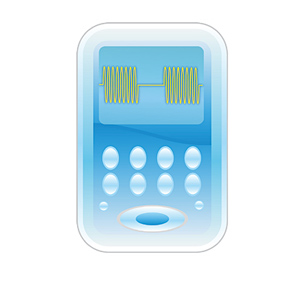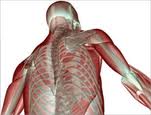The Dr. Yadov Kotsha It has become famous for using the 'electrostimulation for training of athletes of’ USSR and his studies were made public at the Olympics in Montreal (1976) when it became known that Soviet athletes.
The current used for stimulation of the athletes was Russia's current call (o in Kotz) e It began to be used by athletes from other countries to become one of the sport training resources. Kotz, through experiments and research, It defined the characteristics of the current which bears his name: – current form of: sinusoidal (runs through the muscle tissue alternately in both directions) – frequency 2500 Hz when applied to the muscle (1000 Hz if applied directly to the nerve) – dispensing with trains of pulses with a duration of 10 msec. To avoid premature muscle fatigue, which appears after about 12/15 sec. of continuous stimulation, Kotz called in 10 sec. the maximum duration of the working phase (dispensed in packets of 10 msec, of alternating stimulation 10 msec, pause) followed by 50 sec. break with a duty cycle of 1:5. Compared to the low frequency currents eccitomotorie, this current ensured greater muscle recruitment, action in depth and greater tolerability.
The use of curKotz bodies in the medical field
new acq scientific uisizioni on the muscle contraction mechanism and a technology to generate impulses formand several (painting, triangular, trapezioidali, etc.) has made sure that the electrical stimulation of the muscle for sports training gradually abandon the sinusoidal current to use the performing current square wave biphasic and symmetrical with variable frequencies from 30 a 120 Hz.
scientific uisizioni on the muscle contraction mechanism and a technology to generate impulses formand several (painting, triangular, trapezioidali, etc.) has made sure that the electrical stimulation of the muscle for sports training gradually abandon the sinusoidal current to use the performing current square wave biphasic and symmetrical with variable frequencies from 30 a 120 Hz.
The current Kotz however, it continued to be used in the medical field where it still finds a valid application for its characteristics: 1) Good muscle recruitment 2) Deep action The excitomotor effect of the Kotz current, unlike other types of current, It is realized in the deep muscles because the skin in these currents opposes a lesser resistance. E’ in fact it demonstrated that the electrical impedance of the skin decreases with increasing frequency.
Maximum tolerability
Among the current eccitomotorie, the medium frequency sinusoidal currents are better tolerated by the patient. This occurs because, increasing the frequency of the current, it creates a discrepancy between the muscular contraction and the threshold of pain sensation. At the frequency of 3.000-8.000 Hz the threshold of painful sensitivity is higher than that excited-motor. At these frequencies the electrical impulses stimulate the motor nerve fibers and those of less sensitivity to pain and, therefore, cause of virtually painless muscular contractions.
Kotz currents Applications
The sinusoidal current Kots has found an important application in the field of orthopedics for the treatment of scoliosis according to the method SPES (Surface Paravertebral Electro Stimulation). The electrostimulation paravertebral is a relatively recent method and its validity remains, however, still under discussion but one can recognize that in well-selected cases allows you to spread the use of the corset without any risk to the patient. Another area of application of electrotherapy in innervated muscle is constituted by the EDF, Functional Electrical Stimulation. On the EDF exist numerous scientific papers that describe the electrostimulation hemiplegic introducing the electrical stimulation of muscles non-spastic devoid of nervous control, in order to evoke a muscle contraction that produces a useful functional movement. Remember that there is a hemiplegic muscle paralysis of the lower motor neuron lesion but a movement paralysis; the electrical excitability of the peripheral nerves as well as the contraction of the muscles are not altered ability for which there are prerequisites for the application of electrical stimulation. The electrotherapy with current Kots is finally also used in muscle transplants, both to ensure the muscle transposed a suitable tropism for its new function, that to help the patient to become aware of the different functional situation, thanks to afferents produced by induced muscle contraction.
